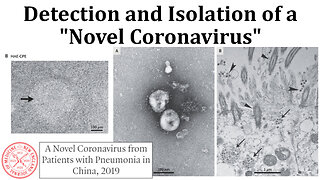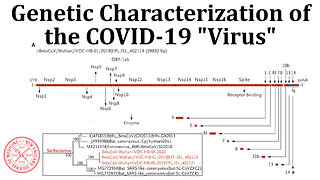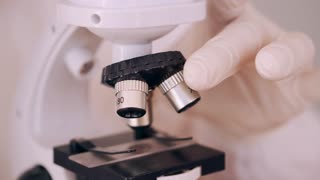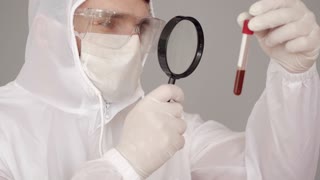A New Strain of Coronavirus: What You Should Know
A sincere welcome If fan what we do, subscribe click the bell and join us . Welcome!
In Dec. 2020, a new strain of the coronavirus that causes COVID-19 was reported in the news media. The new strain’s existence raises questions: Is the coronavirus more contagious now? Will the vaccines still work? Are there new or different things you should do now to keep your family safe?
Stuart Ray, M.D., Vice Chair of Medicine for Data Integrity and Analytics, and Robert Bollinger, M.D., M.P.H., Raj and Kamla Gupta Professor of Infectious Diseases, are both experts in SARS-CoV-2, the virus that causes COVID-19. They talk about what is known about this new strain, and answer potential questions and concerns you may have.
Why did the coronavirus change?
New strains of viruses occur when there is a change (mutation) to the virus’ genes. Ray says it is the nature of RNA viruses such as the coronavirus to evolve and change gradually. “Geographic separation tends to result in genetically distinct strains,” he says.
Mutations in viruses — including the coronavirus causing the COVID-19 pandemic — are neither new nor unexpected. Bollinger explains: “All viruses mutate over time, some more than others. For example, flu viruses change often, which is why doctors recommend that you get a flu shot every year.
“We have already seen multiple variants of the SARS-CoV-2 coronavirus that are different from the version we first saw in China,” he says.
He notes that this particular strain was detected in southeastern England in September 2020. In December, it became the most common version of the coronavirus, accounting for about 60 percent of new COVID-19 cases. The new strain also appeared in Denmark, the Netherlands, and other European countries, and a similar variant emerged in South Africa.
The COVID-19 new strain: How is it different?
“There are about 23 genetic changes in this strain,” Bollinger says. “There’s some preliminary suggestion that it’s more [contagious], and, although that’s not proven, scientists are noticing a surge of cases in areas where the new strain is appearing, and there could be a connection.”
He notes that the mutations in the new strain seem to affect the coronavirus’s spike proteins, which cover the outer coating of the SARS-CoV-2 coronavirus and give it its characteristic spiny appearance. These proteins help the virus attach to human cells in the nose and other areas and invade the body, causing COVID-19 illness.
“Researchers want to see whether the new strain is more ‘sticky,’ due to changes in the spike protein,” he says. “But at this point, that’s not proven, and further studies will reveal more about whether or not the new strain is more easily transmitted.”
Is the new strain of the coronavirus more dangerous?
Bollinger says that so far, the news is good. Although the mutated coronavirus may spread faster from person to person, it does not appear any more likely to cause severe disease or death: “We are not seeing any indication that the new strain is more virulent or dangerous in terms of causing more severe COVID-19 disease.”
He explains that for a virus to survive, it may be more advantageous for it to evolve so that it spreads more easily. On the other hand, viruses don’t get the chance to reproduce if they mutate to become deadly: “If we get too sick or die from a particular virus, we can’t transmit it,” he notes.
-
 22:22
22:22
Math Easy Solutions
11 months ago $0.01 earnedCOVID-19 Paper Results: Detection and Isolation of a "New Virus"
2811 -
 4:53
4:53
Daein Explains
3 months ago100% Lethal Strain of Coronavirus Discovered?|⚛
33 -
 11:26
11:26
Math Easy Solutions
11 months ago $0.01 earnedReview of Abstract of Main Paper on COVID-19 "Virus" Isolation
1961 -
 18:15
18:15
Praxis Homesteading and Survival Skills
4 months agoChina's Amazing New (Potentially) 100% Lethal Coronavirus: Introducing GX_P2V
544 -
 1:11:08
1:11:08
PrevMed Health
3 years agoNew Coronavirus Strain: Should We Be Worried?
15 -
 3:15:01
3:15:01
Math Easy Solutions
11 months ago $0.05 earned🔥#MESScience 4: Review of COVID-19 "Virus" Isolation Paper
4241 -
 10:48
10:48
EricDubay
8 months agoCoronaVirus or New World Order?
6.88K12 -
 10:48
10:48
Math Easy Solutions
10 months ago $0.02 earnedCOVID-19 Paper Results: Genetic Characterization of the "Virus"
1471 -
 0:12
0:12
man_camera
3 years ago $0.11 earnedcovid 19 coronavirus corona virus 3
5591 -
 0:12
0:12
man_camera
3 years ago $0.04 earnedcovid 19 coronavirus corona virus 1
347